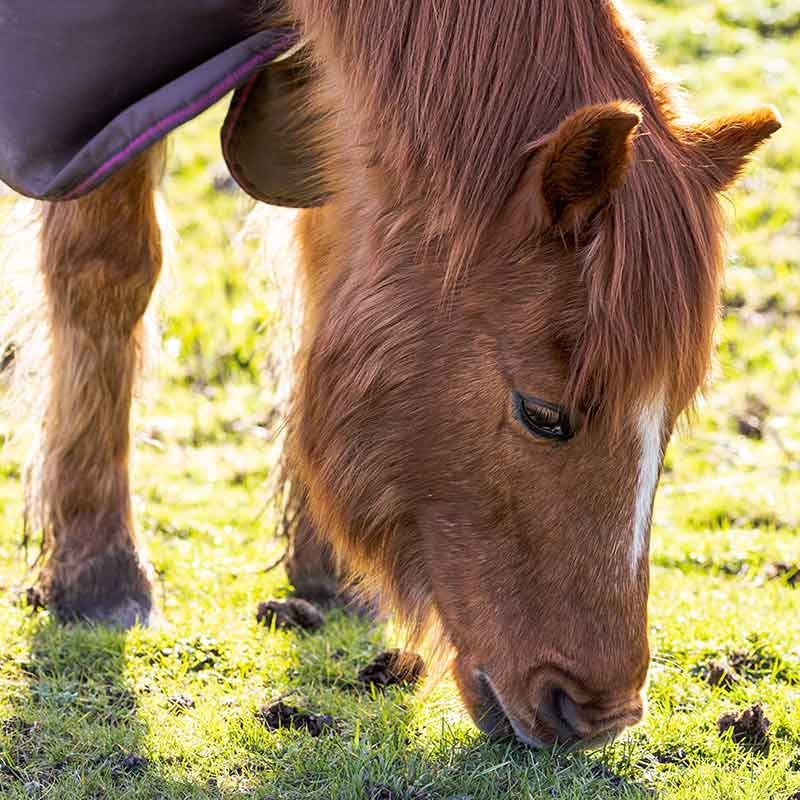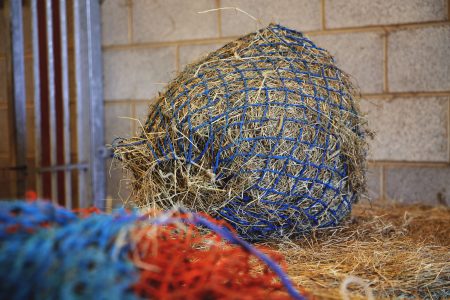Cushing Disease is a malfunction of the pituitary gland – a small gland in the brain that produces the Adrenocorticotropic hormone (ACTH). This hormone regulates cortisol release from the adrenal glands in response to stress, to prepare the horse for flight or fight. Horses with Cushings have too much ACTH and so the animal is in a constant state of excitement.
This has biochemical implications – to prepare for flight, the body elevates glucose levels. In Cushings, the elevated glucose and cortisol has a constant effect in “clearing the decks for flight”. This includes increasing fat and amino acid deposition and diverting glucose from the muscles to power these functions. This results in the standard symptoms o
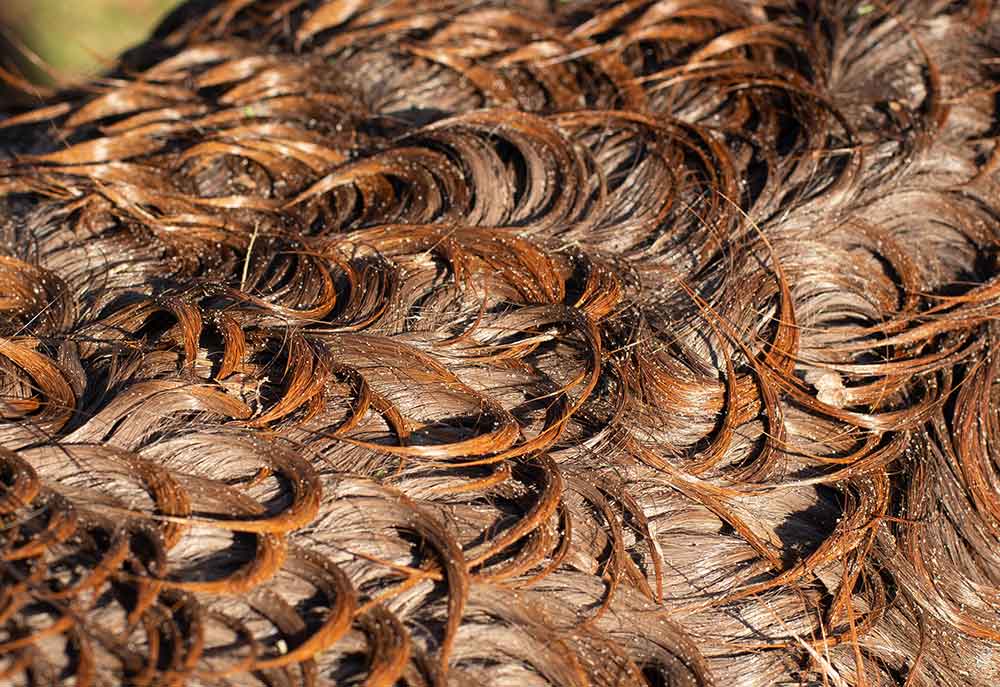
Equine Metabolic syndrome (EMS) is a condition which alters levels of glucose and the body’s ability to metabolise (processing of substances in order to be used) fat in horses and ponies. The condition is characterised by obesity, fat deposits in certain areas, and laminitis. The underlying biology of EMS involves resistance or insensitivity to insulin which results in a variety of physiological changes.
EMS causes changes in the tiny organisms that live in a horse’s gut which results in less variety of these microorganisms in these horses. Specifically, there are fewer of a kind called Fibrobacter and more of another kind called Verrucomicrobia. Because of these changes, there’s a low level of ongoing inflammation in the body. This situation leads to an increase in harmful substances from bacteria, which can cause more inflammation and make the body less responsive to insulin, a condition worsened by being overweight.
Feeding a horse with EMS should prioritise supporting the natural inflammation cycle to optimise its progress. Providing antioxidants, feeding to reduce nutrient imbalance, avoiding overfeeding and optimising the horse’s normal diet and feeding behaviour, are all positive actions that may be beneficial to compromised animals
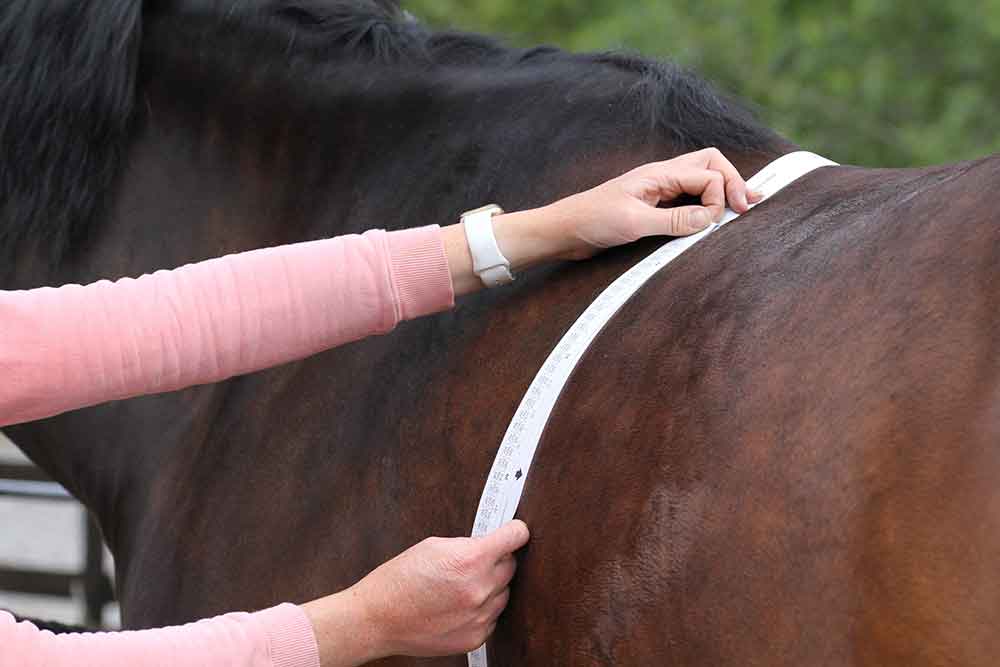
Nutritional and management response to Cushings is fairly consistent in its recommendations and is based around the need to exercise the horse and limit its intake of Non-Structural Carbohydrates (basically starch, fructans and free sugars). Exercise, as long as the horse does not have laminitis, will help re-direct glucose back to the muscles and mobilise fat reserves.
Reducing starch intake will avoid elevated insulin. High insulin can reverse the mobilisation of fats and amino acids. Additionally, too much starch can lead to undigested material entering the hindgut, disruption of hindgut microbes and the potential to trigger laminitis.
Finally, reducing fructans (the storage sugar of grasses – especially high in Spring) will also avoid high insulin/poor hindgut functions.
Beet products, such as Speedi-Beet and Fibre-Beet are extremely low in starch and sugars and have a fermentation pattern in the hindgut that is similar to grass but is also reported to stimulate those bacteria that ferment structural carbohydrates.
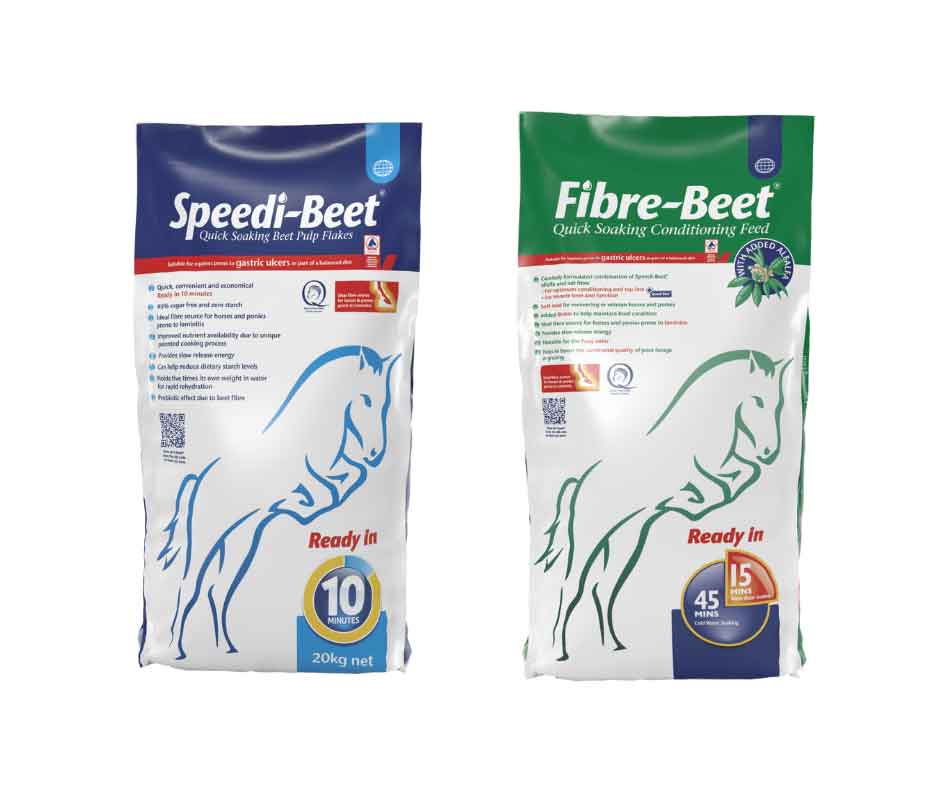
They therefore enhance the fermentation of fibre producing more volatile fatty acids (VFAs) that are the mainstay of energy production for the horse. Propionic acid can replace dietary glucose (starch) biochemically, whilst the other VFAs enter the energy producing pathways further down. Additionally, beet fermentation produces less lactic acid than grass, and it is lactic – alongside toxic metabolites from the disrupted microflora that initiate laminitis.
Feeding relatively low levels of Speedi-Beet (typically 500g), with its available energy, can reduce reliance on compound feeds, some of which may be very high in starch. Fibre-Beet used as a forage replacer can offset high fructans intake. Combining the two gives the flexibility of being able to react to most situations where low Non-Structural Carbohydrates are essential for continued vitality.



